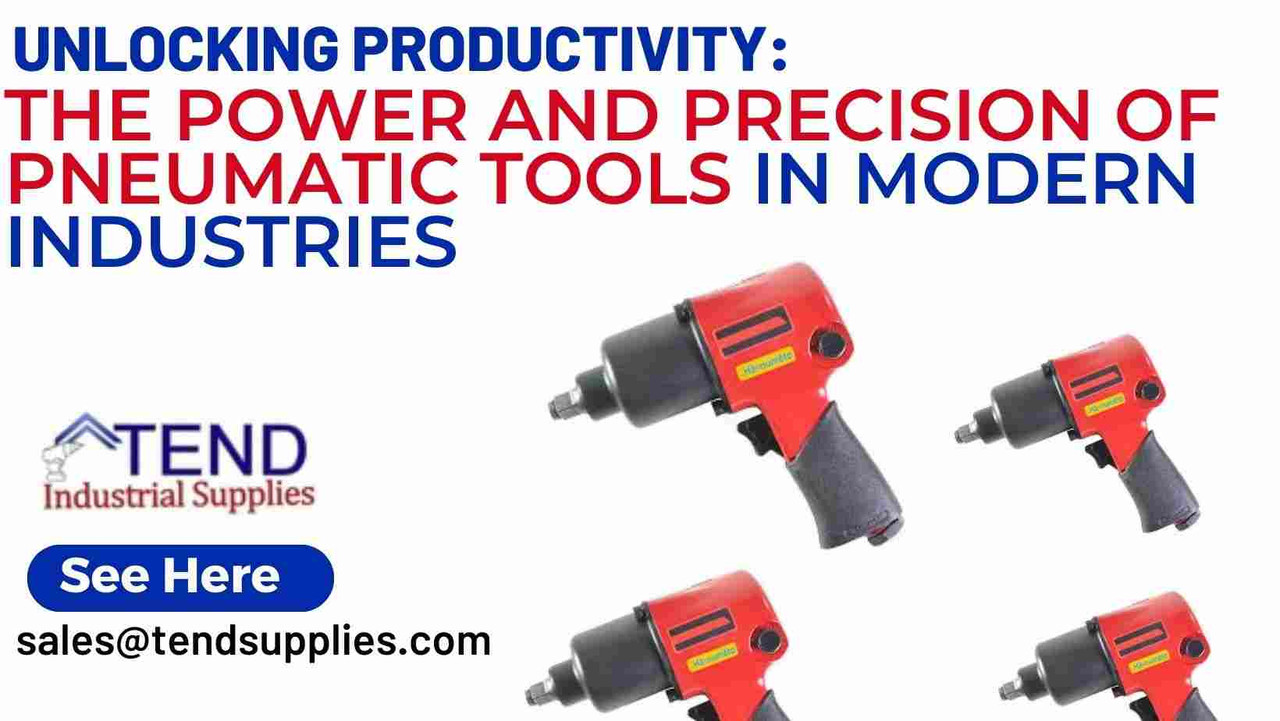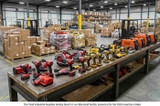Unlocking Productivity: The Power and Precision of Pneumatic Tools in Modern Industries
The Power and Precision of Pneumatic Tools in Modern Industries
Power tools are pivotal in determining efficiency, productivity, and overall output in today's fast-paced industrial landscape. Among the myriad available tools, pneumatic tools have carved a niche, emerging as indispensable assets in various sectors. These air-powered marvels, known for their unparalleled efficiency and precision, have revolutionized industries, enabling businesses to achieve their objectives with remarkable swiftness and finesse.
Understanding the World of Pneumatic Tools:
At their core, pneumatic tools, often called air tools, operate using the power of compressed air. This simple yet effective mechanism allows them to generate the necessary force for many tasks, ranging from intricate drilling operations to heavy-duty grinding and nailing. Designed to minimize manual effort, they promise efficient results and a level of precision that's hard to achieve with manual tools.
The Historical Evolution:
Using air as a power source has a long history. Ancient civilizations had recognized the potential of compressed air. However, it was only in the last century that technology evolved to a point where compressed air could be effectively harnessed for industrial tasks. As industries grew and the demand for faster, more efficient tools increased, the pneumatic tool became a staple in diverse industrial settings.
Why Pneumatic Tools Hold an Edge Over Manual Tools:
The advantages of pneumatic tools extend beyond speed and efficiency. Here's a deeper look into their distinct benefits:
Higher Speed and Accuracy:
The consistent power from compressed air ensures that pneumatic tools operate optimally, completing tasks in record time. This efficiency is especially vital for industries like construction or assembly lines, where time saved translates directly to cost savings. For instance, framing a house with a pneumatic nail gun is significantly faster and more consistent than using a hammer and nails.
Reduced Worker Fatigue:
The ergonomic design of pneumatic tools, combined with their lightweight nature, ensures minimal physical exertion. This is a significant advantage, especially in sectors like construction and automotive, where tasks can be labor-intensive. Assembly line workers using pneumatic screwdrivers experience less fatigue compared to using manual screwdrivers, allowing them to maintain productivity throughout their shifts.
Impressive Power-to-Weight Ratio:
Pneumatic tools pack a punch despite their lightweight design. A mechanic can wield a powerful impact wrench to loosen lug nuts with ease, whereas a similarly powered electric wrench would likely be much heavier and bulkier. This balance of power and weight ensures easy handling, even in tight or challenging spaces.
Durability and Versatility:
Built to endure the rigors of industrial environments, pneumatic tools are designed to withstand heavy use. Their versatility ensures they cater to various applications, promising longevity and consistent performance. Impact wrenches can be used for tightening bolts on construction sites or loosening rusty lug nuts in a repair shop. Die grinders can be used for everything from smoothing welds to cleaning and shaping metal.
Safety First: The Underrated Benefit of Pneumatic Tools
One aspect of pneumatic tools that often goes unnoticed is their safety. Unlike electric tools, there's no risk of electric shocks in wet environments or around conductive materials. Moreover, they don't overheat, reducing the risk of burns or fire hazards. This safety feature is crucial, especially in industries where workers are exposed to potential electrical risks.
The Environmental Angle:
In an age where sustainability is a major concern, pneumatic tools shine. They don't emit harmful pollutants or exhaust fumes, making them an eco-friendly choice. Moreover, they are quieter than many of their electric counterparts, contributing to noise pollution reduction in factories and workshops.
Cost Considerations:
The initial investment cost of pneumatic tools might be slightly higher than some electric equivalents. However, pneumatic tools typically require less maintenance due to their simpler design and lack of electric motors. Over time, the lower maintenance costs can offset the initial higher purchase price.
Air Compressor Requirements:
It's important to note that pneumatic tools require a separate compressed air source, typically an air compressor. Choosing the right size and type of air compressor depends on the specific tools you plan to use. For example, a small workshop with a few light-duty tools will need a much smaller compressor than a large manufacturing facility with numerous high-demand tools.
Key Takeaways and the Future of Pneumatic Tools:
As industries evolve, the demand for tools that offer speed, efficiency, and safety will only grow. With their myriad advantages, pneumatic tools are poised to meet these demands. Their role in ensuring quality workmanship, the benefits they offer to workers' health and safety, and their contribution to a cleaner environment make them invaluable assets in modern industrial settings.
In the future, as technology advances, we can expect pneumatic tools to become even more user-friendly and efficient. Innovations might bring lighter weight tools for improved maneuverability or quieter operation for further noise reduction. Here at Tend Industrial Supplies, we are constantly
FAQs
What makes pneumatic tools a preferred choice in modern industries?
- Pneumatic tools offer superior speed, efficiency, and precision while minimizing physical exertion and enhancing safety.
Can pneumatic tools be used in any industry?
- Yes, they are versatile enough to be adapted for use in a wide range of industries, including automotive, manufacturing, woodworking, and more.
What are the maintenance requirements for pneumatic tools?
- Regular lubrication, moisture checks, and routine inspections are essential to maintain optimal performance and extend tool life.
Are pneumatic tools environmentally friendly?
- Yes, they operate without direct emissions and can be significantly quieter than other power tools, contributing less to noise pollution.
How do advancements in technology affect pneumatic tools?
- Technological improvements are continually making pneumatic tools more efficient, safer, and more user-friendly.
We are the major suppliers of air tools in the United States
Call to Action
Explore the extensive range of pneumatic tools suitable for all modern industrial needs atTend Industrial Supplies. For more information on selecting the right tools for your projects or to place an order, contact us at sales@tendsupplies.com. Equip your business with the tools that are redefining industry standards, ensuring your operations are not just effective but also cost-efficient and safe.









